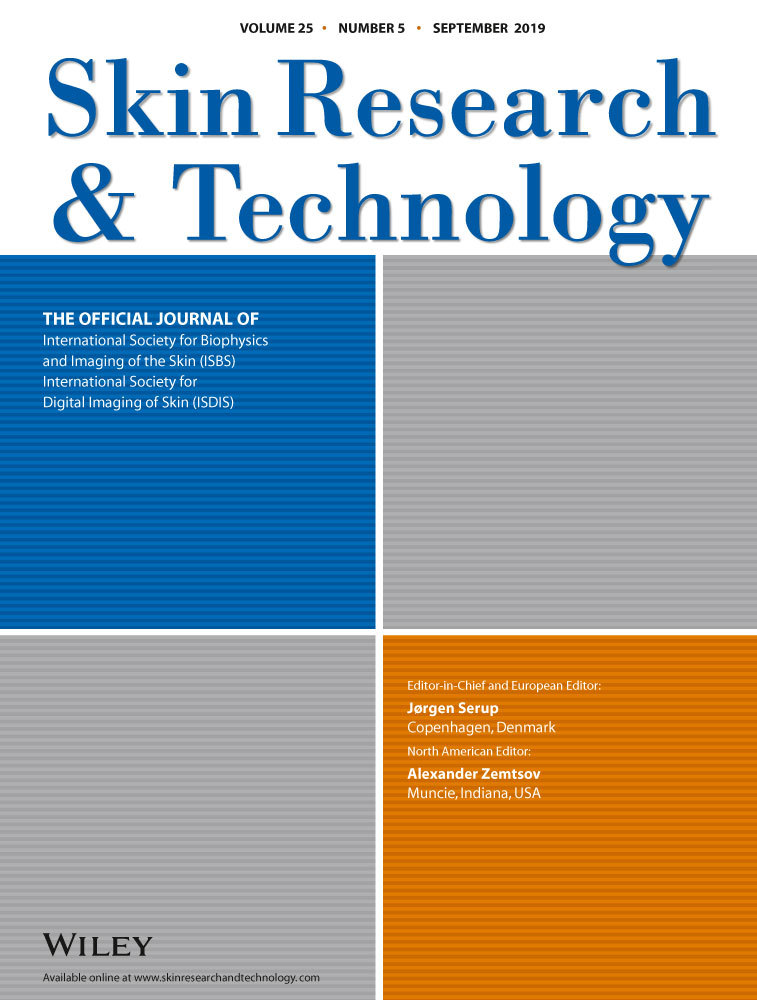Cosmetics increase skin evenness: Evidence from perceptual and physical measures
Abstract
Background
Cosmetics are commonly attributed with increasing skin evenness, yet little published data characterizes the effect, either perceptually or physically. We therefore investigated whether makeup increases skin evenness using a perceptual measurement and two physical measurements of color and luminance homogeneity.
Materials and Methods
Twenty-two French women (aged 29-45 years) were photographed without cosmetics, with self-applied cosmetics, and with professionally-applied cosmetics. In Study 1, 143 participants rated skin evenness. In Study 2, each face was delineated to create regions of interest (ROI) in the cheek and forehead areas. Both ROIs were then analyzed for luminance homogeneity using an established measure (Haralick homogeneity) and a new measure that incorporates chromaticity (H76).
Results
In Study 1, the faces were rated as having more even-looking skin with either self-applied cosmetics or professionally-applied cosmetics than without cosmetics. In Study 2, the luminance homogeneity measure found that the cheek ROI, but not the forehead ROI, was more homogeneous after both self-applied cosmetics and professionally-applied cosmetics when compared to without cosmetics. The new measure incorporating chromaticity found greater homogeneity in both ROIs in the two cosmetics conditions. The new measure incorporating chromaticity also better predicted the perceived skin evenness ratings from Study 1.
Conclusion
These results provide systematic empirical evidence that makeup increases perceived skin evenness, and that these increases are partly predicted by physical measurements of skin luminance and color. The data also indicate that H76—the new measure of skin evenness that incorporates chromaticity—better predicts perceived skin evenness.




